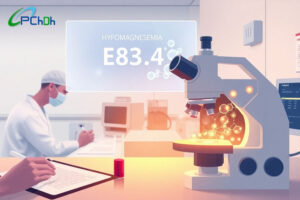Getting a positive result on a pregnancy test opens a new chapter for many women. It’s the first big sign that you might be expecting. But understanding what that positive means is key. Different tests may show different results, and misreading them can cause confusion. Knowing the facts helps you take the right next steps and stay calm.
What Does a Positive Clearblue Pregnancy Test Indicate?
How Clearblue Tests Detect Pregnancy Hormones
Clearblue tests work by detecting the hormone hCG in your urine. When you are pregnant, your body makes more of this hormone. The test has a strip or a digital screen that reacts with hCG. This reaction shows up as a line or a word like “Pregnant” on digital models. The more hCG in your system, the stronger the result.
There are several types of Clearblue tests—digital, non-digital line tests, and advanced digital versions. Each one shows results differently, but all aim to tell if pregnancy hormones are present.
Interpreting Positive Results on Different Clearblue Tests
A positive on a Clearblue digital test means “Pregnant” appears on the screen. On line tests, a plus sign or two lines indicate positive. Digital tests tend to be easier to read and less confusing.
Research shows that Clearblue pregnancy tests Positive are about 99% accurate when used correctly after a missed period. Still, no test is perfect. A positive result is very reliable but confirmatory tests can add peace of mind.

Common Scenarios When a Positive Test Is Confirmed
Most women get a clear positive in early pregnancy, often just a few days after the missed period. Sometimes, women test earlier and still get a positive. False positives are rare but can happen due to specific health issues or test errors. Only a healthcare provider can confirm pregnancy through proper medical testing.
Factors That Can Influence a Positive Result
Accurate Results and Timing
Timing is everything. The best time to test is after you’ve missed your period. Testing too early might not give a true result, even if you are pregnant. Always follow the instructions precisely for accurate results.
Conditions Leading to False Positives
Although rare, false positives can happen. Medical conditions such as ovarian cysts or certain cancers may produce hCG, causing a false positive. If you’re taking medications with hCG or have had hormone treatments, results might also be affected. User error like checking too soon can make results misleading.
Validating the Results
If you get a positive result, repeat the test in a few days for confirmation. Visiting your doctor is essential. Blood tests and ultrasound provide final proof of pregnancy and are more accurate.
What to Do After a Positive Clearblue Pregnancy Test
Immediate Next Steps
First, schedule an appointment with your healthcare provider. They’ll confirm your pregnancy and guide you through early care. Early prenatal visits help ensure both your health and your baby’s.
Confirmatory Tests and Medical Evaluation
A blood test can measure the exact level of hCG circulating in your body. An ultrasound, typically done a few weeks later, confirms the pregnancy’s location and viability.
Lifestyle and Health Considerations
Start taking prenatal vitamins today. Avoid alcohol, smoking, and certain medications unless approved by your doctor. Keep a healthy diet and stay active if your provider says so.
Common Concerns and Troubleshooting
What if the Result Is Unexpectedly Positive?
Getting a positive when you weren’t expecting one can bring surprise or worry. Take a deep breath. Confirm the result with another test, and then talk to your doctor. Early support helps you plan ahead.
Dealing with a False Positive
False positives are uncommon, but they do happen. If you suspect your test was wrong, consult a healthcare professional. Additional testing may be needed to clear doubts.
Misinterpretation of Results
Digital tests saying “Pregnant” are usually straightforward. Line tests showing a single line or a plus sign need careful reading. Always read instructions carefully, and don’t rush your interpretation.
Expert Insights and Real-World Perspectives
Many OB-GYNs agree that Clearblue tests are quite accurate when used as directed. Patients share stories of realizing early pregnancy with positive results, which helped them prepare earlier. Some studies indicate that false positives occur less than 1% of the time but are often linked to specific health conditions.
Conclusion
A positive Clearblue pregnancy test is an exciting sign that you may be expecting. Still, it’s essential to see a healthcare provider for confirmation. Early medical advice helps ensure a healthy pregnancy journey. If your test is positive, take a deep breath and plan your next steps with confidence. Remember, professional support and proper testing are the best ways to move forward. Keep a positive mindset and seek help when you need it.


